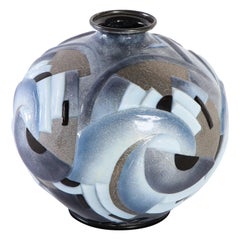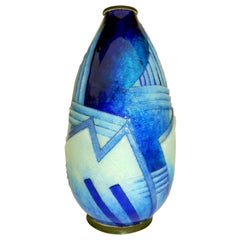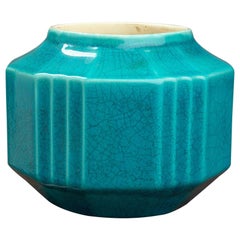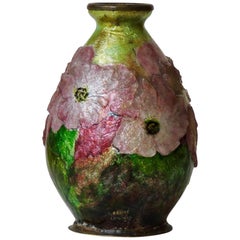Camille Fauré On Sale
Vintage 1920s French Art Deco Vases
Copper
Vintage 1920s French Vases
Copper
People Also Browsed
Antique Late 19th Century European Moorish Architectural Elements
Wrought Iron
Vintage 1930s Belgian Art Deco Vases
Ceramic
Antique Mid-19th Century English Victorian Taxidermy
Animal Skin, Glass, Plaster, Feathers
Early 20th Century French Art Nouveau Vases
Glass
Antique 1860s Italian Classical Roman Figurative Sculptures
Marble, Carrara Marble, Siena Marble, Bronze
Antique 17th Century Italian Baroque Bookcases
Spruce
20th Century American Art Nouveau Glass
Glass
Antique 1870s German Rococo Vases
Porcelain
Antique 1880s German Rococo Vases
Porcelain
Vintage 1930s French Art Deco Vases
Ceramic
Vintage 1920s French Art Deco Vases
Art Glass
Antique 1860s French Louis XVI Urns
Bronze
Early 20th Century French Art Nouveau Vases
Glass
Antique 1880s Japanese Meiji Blanket Chests
Bronze
Vintage 1920s French Art Deco Mantel Clocks
Art Glass
Early 20th Century French Art Deco Vases
Copper
Recent Sales
Vintage 1920s French Art Deco Vases
Copper, Enamel
Vintage 1920s French Art Deco Vases
Copper, Enamel
Camille Fauré for sale on 1stDibs
Camille Faurè produced designs for Limoges, long famed for its enamels.
Born in Perigueux, France, in 1874, Faurè spent a long apprenticeship before setting up his own workshop at Limoges, where he worked for over fifty years. Fauré became Limoges’ most famous and talented enamel artist. He exhibited in the 1925 International Exhibition of Modern Decorative and Industrial Arts, which gave Art Deco its name.
Faurè’s early work, like his post–World War II designs, involved large floral patterns, often in rich colors that kept in line with the Art Nouveau movement. He exhibited through his Paris shop, and produced vases, bowls, ashtrays, boxes and other items.
Faurè’s vases were made in many different shapes, including those of the gourd, kettledrum and egg, with geometric or stylized floral patterns. It was his geometric designs, however, which set him apart as the greatest creative enameller of the Art Deco style. These geometric designs included chevrons, lozenges, diagonal and stripe patterns and floral motifs, ranging from naturalistic to stylized patterns of leaves and flowers. The geometric patterns featured strong hues of blue, red, orange and yellow accented with blacks, whereas the floral patterns had more delicate hues such as turquoise, light blue, pink, lavender and white. Some vases had panels and borders of floral motifs combined with geometric stepped and angled motifs.
Using large vessels, vases, bowls or open-mouthed jardinières, the copper was covered in multiple layers of polychrome enamels in hard, vitreous, three-dimensional geometric designs of subtle complexity and color combinations. Faurè’s friend Marty occasionally worked with him in a very similar style. Both produced a small number of pendants in enameled gold, silver and copper.
Find a collection of Camille Faurè furniture and decorative objects on 1stDibs.
(Biography provided by Ophir Gallery)
Materials: Copper Furniture
From cupolas to cookware and fine art to filaments, copper metal has been used in so many ways since prehistoric times. Today, antique, new and vintage copper coffee tables, mirrors, lamps and other furniture and decor can bring a warm metallic flourish to interiors of any kind.
In years spanning 8,700 BC (the time of the first-known copper pendant) until roughly 3,700 BC, it may have been the only metal people knew how to manipulate.
Valuable deposits of copper were first extracted on the Mediterranean island of Cyprus around 4,000 BC — well before Europe’s actual Bronze Age (copper + tin = bronze). Tiny Cyprus is even credited with supplying all of Egypt and the Near East with copper for the production of sophisticated currency, weaponry, jewelry and decorative items.
In the 15th, 16th and 17th centuries, master painters such as Leonardo da Vinci, El Greco, Rembrandt and Jan Brueghel created fine works on copper. (Back then, copper-based pigments, too, were all the rage.) By the late 19th and early 20th centuries, decorative items like bas-relief plaques, trays and jewelry produced during the Art Deco, Arts and Crafts and Art Nouveau periods espoused copper. These became highly valuable and collectible pieces and remain so today.
Copper’s beauty, malleability, conductivity and versatility make it perhaps the most coveted nonprecious metal in existence. In interiors, polished copper begets an understated luxuriousness, and its reflectivity casts bright, golden and earthy warmth seldom realized in brass or bronze. (Just ask Tom Dixon.)
Outdoors, its most celebrated attribute — the verdigris patina it slowly develops from exposure to oxygen and other elements — isn’t the only hue it takes. Architects often refer to shades of copper as russet, ebony, plum and even chocolate brown. And Frank Lloyd Wright, Renzo Piano and Michael Graves have each used copper in their building projects.
Find antique, new and vintage copper furniture and decorative objects on 1stDibs.
Finding the Right vases for You
Whether it’s a Chinese Han dynasty glazed ceramic wine vessel, a work of Murano glass or a hand-painted Scandinavian modern stoneware piece, a fine vase brings a piece of history into your space as much as it adds a sophisticated dynamic.
Like sculptures or paintings, antique and vintage vases are considered works of fine art. Once offered as tributes to ancient rulers, vases continue to be gifted to heads of state today. Over time, decorative porcelain vases have become family heirlooms to be displayed prominently in our homes — loved pieces treasured from generation to generation.
The functional value of vases is well known. They were traditionally utilized as vessels for carrying dry goods or liquids, so some have handles and feature an opening at the top (where they flare back out). While artists have explored wildly sculptural alternatives over time, the most conventional vase shape is characterized by a bulbous base and a body with shoulders where the form curves inward.
Owing to their intrinsic functionality, vases are quite possibly versatile in ways few other art forms can match. They’re typically taller than they are wide. Some have a neck that offers height and is ideal for the stems of cut flowers. To pair with your mid-century modern decor, the right vase will be an elegant receptacle for leafy snake plants on your teak dining table, or, in the case of welcoming guests on your doorstep, a large ceramic floor vase for long tree branches or sticks — perhaps one crafted in the Art Nouveau style — works wonders.
Interior designers include vases of every type, size and style in their projects — be the canvas indoors or outdoors — often introducing a splash of color and a range of textures to an entryway or merely calling attention to nature’s asymmetries by bringing more organically shaped decorative objects into a home.
On 1stDibs, you can browse our collection of vases by material, including ceramic, glass, porcelain and more. Sizes range from tiny bud vases to massive statement pieces and every size in between.





